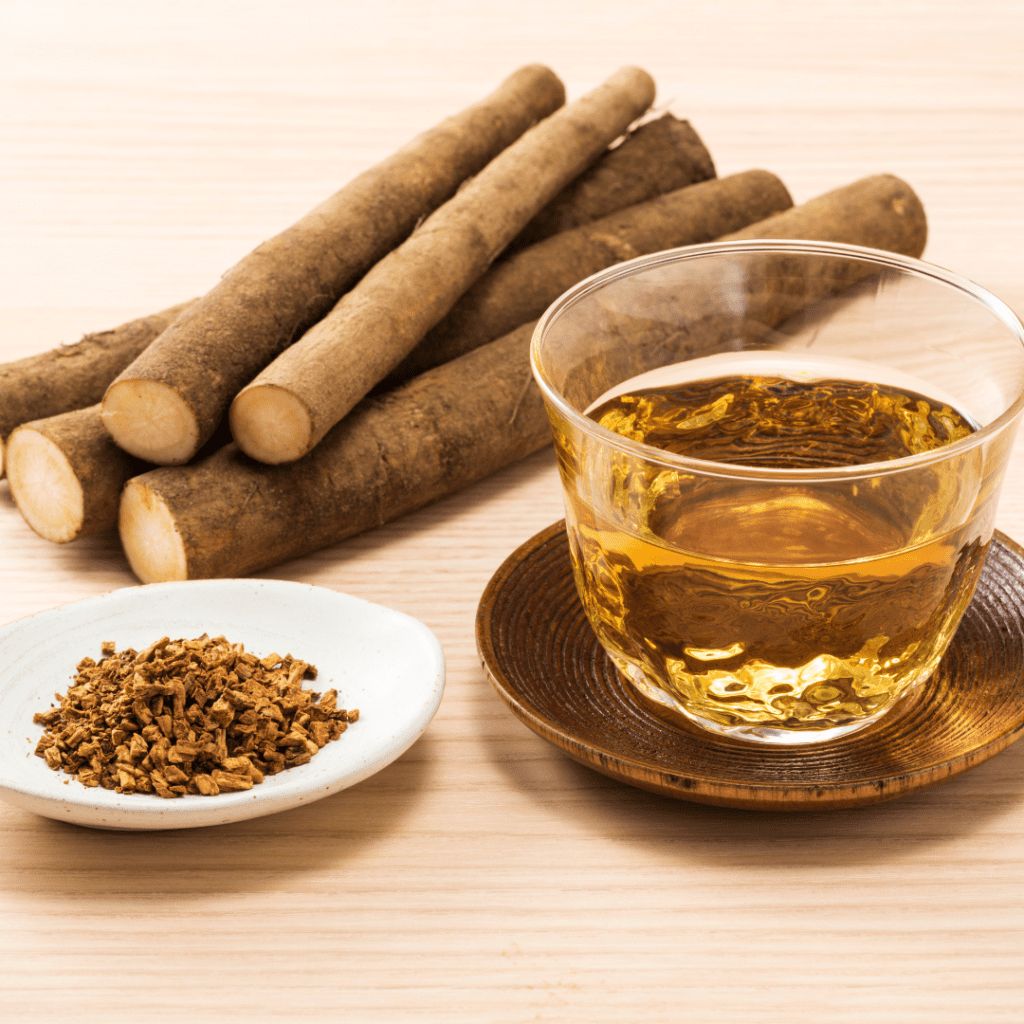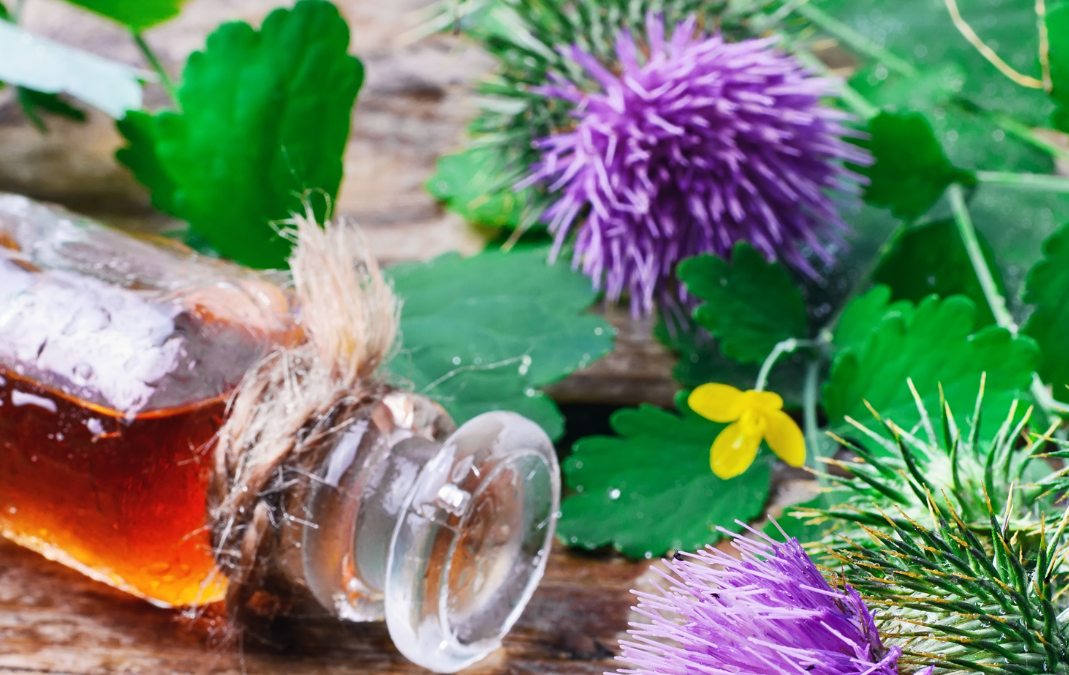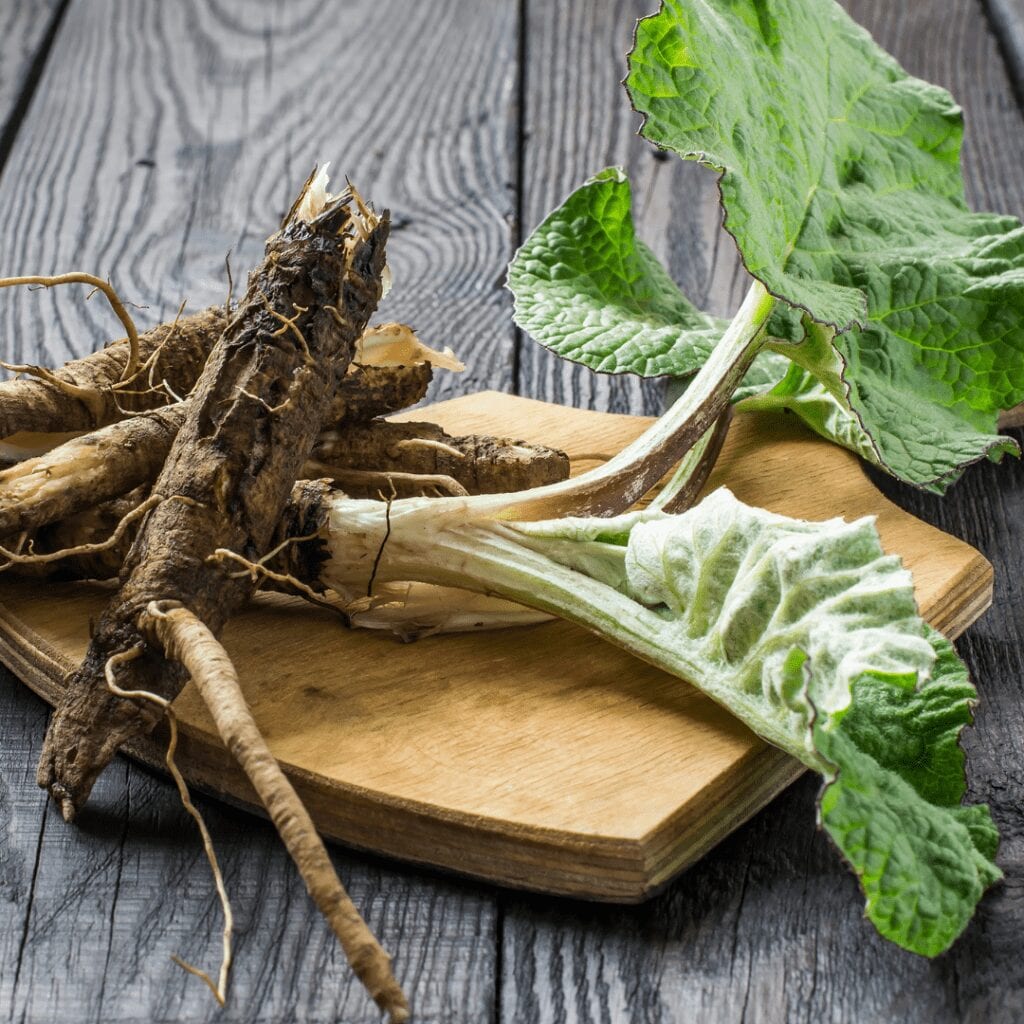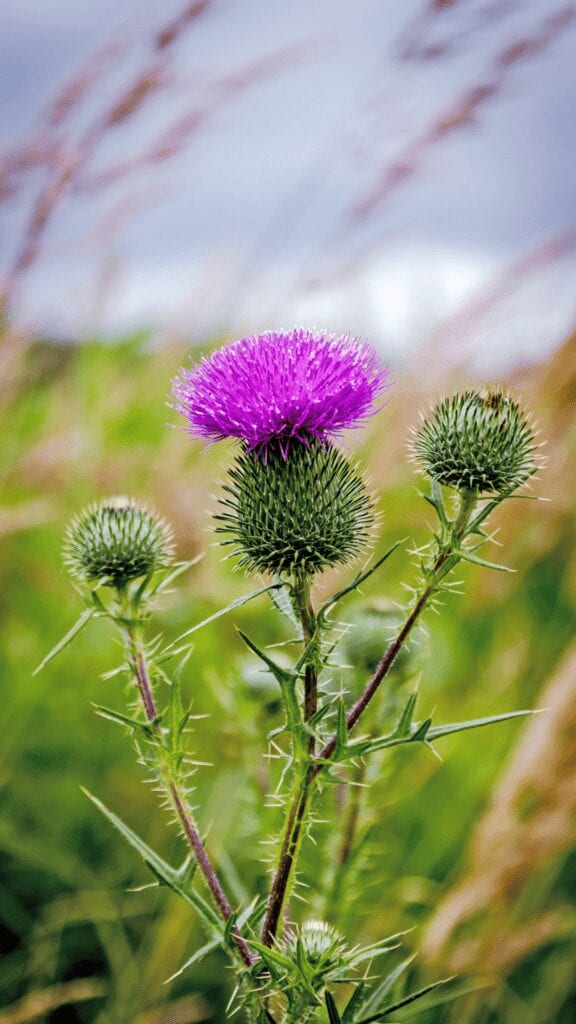The autumn is the perfect time for digging roots of medicinal and edible plants like dandelion, chicory, yellow dock, and burdock. Many of these abundant botanicals may be growing wild around you, regardless of whether you are an urban or rural dweller. Just before winter, starchy roots like burdock are at their best as they have accumulated the maximum amount of active constituents just as the leaves of the plant die back for the season.
Not ready to get down in the dirt just yet? You may have spotted burdock roots being sold at your local Asian market as gobo, which may be found raw or even pickled. Earthy, rich, and medicinal without being too bitter, burdock’s flavor profile makes it adaptable and desirable within recipes like burdock stew or stirfry. But its symphony of phytochemicals which stimulate the blood and the body’s natural cleansing powers is what makes it outstanding when it comes to inside-out skin care.
Burdock Root Benefits the Liver and the Skin
What is burdock root good for? Burdock has the most affinity with the digestion and elimination organ systems of the body, especially the stomach, liver, pancreas, and gallbladder. As a slightly bitter herb, burdock improves digestion and optimal absorption of nutrients when included before or during a meal. Burdock increases the overall efficiency of the channels of waste removal, encouraging the body to safely discharge impurities and toxins in a very effective manner.
Known as the primo clarifier of the skin in herbal medicine, burdock has quite a claim to fame when it comes to promoting dermal health. Because skin health and liver health are so intertwined, burdock’s impact on itchy and rashy areas or acne, rosacea, and eczema-prone skin comes about by way of its ability to nourish and stimulate the liver. Burdock is also known as one of the top alternatives, or herbs for cleansing the blood and promoting good circulation. This ability also helps to encourage skin health based on the principle of healthy interior = healthy exterior.

Burdock bonus: the ultra-moisturizing infused oil of burdock seed is well-known for its ability to improve scalp health, particularly where there is dry or irritated skin. The whole plant has a rich history of being used to topically treat fungal infections, cuts, rashes, abrasions, and burns.
Because burdock is one of the top general anti-inflammatory herbs, we love using it on sensitive or irritated skin. It’s a calming balm for inflamed skin conditions and has the amazing ability to be naturally hydrating without being oily or leaving pores clogged. You can find burdock root in our Redness Relief Bar, a head-to-toe cleansing solution for a range of problematic skin issues. We take care to use only the most pristine sources of wildcrafted burdock root, which is even higher in skin-saving medicinal constituents than the organically grown root.
From Dirt to Detox: How to Identify and Consume Burdock Root
Burdock can be easily identified and doesn’t have too many lookalikes. While it tends to grow in disturbed sites, roadsides, rocky fields, or even waste areas, it is largely considered a weed and can be found nearly everywhere in the US. It is a biennial or a plant with a two-year lifespan. The first year, its large leaves form a basal rosette close to the ground. The second year, it sends up a tall shoot, exploding into spiny purple flowers and later clusters of incredibly sticky, burred seedpods (hence the name).
Identifying the burdock root is easy, but digging it up can be a challenge to even the toughest shovel. Burdock sends down a long skinny taproot, pulling up minerals and nutrients from deep within the earth. Because its root can go so far down, be sure to take your time removing the soil around the plant so as to get as much of the tasty root out as possible.


 Burdock is equal parts of medicinal herb and traditional
Burdock is equal parts of medicinal herb and traditional